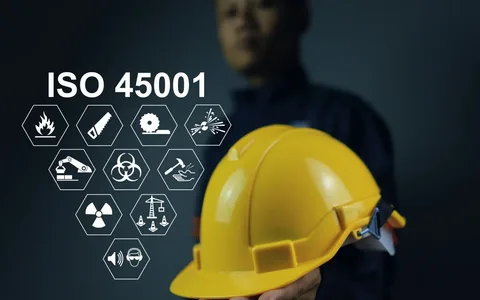What is ISO 45001 Certification?
The Safety Standard That Actually Works
Unlike vague safety policies that collect dust, ISO 45001 provides a proven framework for identifying and controlling workplace hazards. It's not about creating more paperwork - it's about creating fewer accidents.
How ISO 45001 Differs From Old Safety Approaches
Remember when safety was just about hard hats and fire drills? ISO 45001 takes a holistic view, considering everything from psychological stress to long-term exposure risks. It's safety for the real world.
Why Your Workplace Needs ISO 45001
Stop Reacting to Accidents - Start Preventing Them
Most safety programs are like ambulance chasers - they show up after the damage is done. ISO 45001 flips this, helping you spot risks before they hurt someone.
The Surprising Business Benefits Beyond Safety
Here's the kicker - companies with strong safety cultures often see:
-
25% lower turnover
-
13% higher productivity
-
Better insurance rates
Turns out, safe workplaces are profitable workplaces.
How Certification Improves Your Legal Standing
With increasing OHS regulations, certification acts like legal body armor. It shows regulators you're serious, potentially reducing fines and liability.
The Step-by-Step Certification Process
Phase 1: Laying the Groundwork
Leadership Commitment (No, Really - This Matters)
If leadership treats this as just another compliance exercise, it will fail. Real change starts at the top.
Identifying Your Safety Pain Points
Every workplace has different risks. A warehouse worries about forklifts; an office about ergonomics. The standard adapts to your reality.
Phase 2: Building Your Safety System
Creating Policies That Don't Just Sit in a Drawer
We've all seen safety binders that never get opened. ISO 45001 requires living documents that people actually use.
Training That Actually Sticks
Forget boring PowerPoints. Effective training involves:
-
Hands-on demonstrations
-
Regular refreshers
-
Real-life scenarios
Phase 3: Proving It Works
Internal Audits That Find Real Issues
These aren't about ticking boxes - they're about uncovering what's really happening on the shop floor.
The Certification Audit - What to Expect
Auditors want to see:
-
Evidence of leadership involvement
-
Employees who understand the system
-
Continuous improvement
Common Roadblocks (And How to Avoid Them)
When Paperwork Overwhelms Practical Safety
The biggest mistake? Letting documentation become the goal rather than safety itself. Keep it practical and relevant.
Getting Buy-In From Skeptical Employees
"Here comes another safety program..." Combat skepticism by:
-
Involving frontline workers in development
-
Celebrating early wins
-
Making the personal benefits clear
ISO 45001 vs. Other Standards
How It Complements ISO 9001 and 14001
Think of them as a trilogy:
-
9001 = Quality
-
14001 = Environment
-
45001 = Safety
Together, they create an unbeatable management system.
Choosing the Right Certification Partner
Red Flags in Certification Providers
Watch out for:
-
Providers who promise "guaranteed certification"
-
Lack of industry-specific experience
-
No references from similar companies
Real-World Impact Stories
How a Manufacturing Plant Reduced Injuries by 60%
By implementing ISO 45001, one facility:
-
Cut lost-time injuries by 62% in 18 months
-
Reduced workers' comp claims by $240,000 annually
-
Saw unexpected productivity gains of 15%
Taking the First Step
Getting started is simpler than you think. Begin with:
-
A honest assessment of your current safety
-
Leadership alignment on why this matters
-
Finding the right guidance for your industry
FAQs
1. How long does ISO 45001 certification take?
Typically 6-12 months, depending on your starting point.
2. Can small businesses benefit?
Absolutely - the standard scales beautifully for SMEs.
3. What's the cost range?
£3,000-£15,000 depending on size and complexity.
4. How often do we need to recertify?
Surveillance audits annually, full recertification every 3 years.
5. Will this replace all our existing safety programs?
No - it should integrate with and enhance what already works.
Sponsored article: The Best Food Choices for Keto: Delicious Recipes That Keep You in Ketosis



